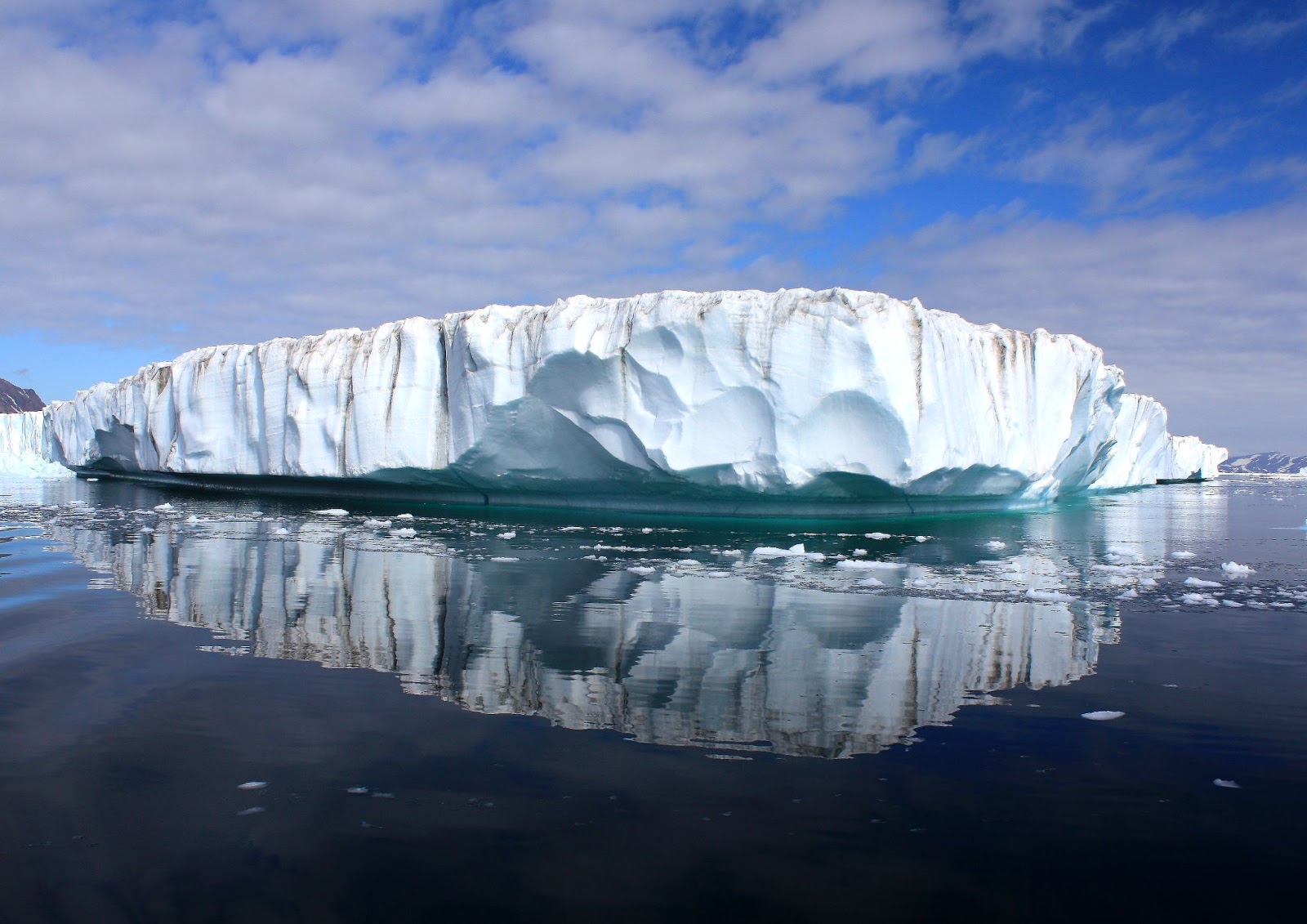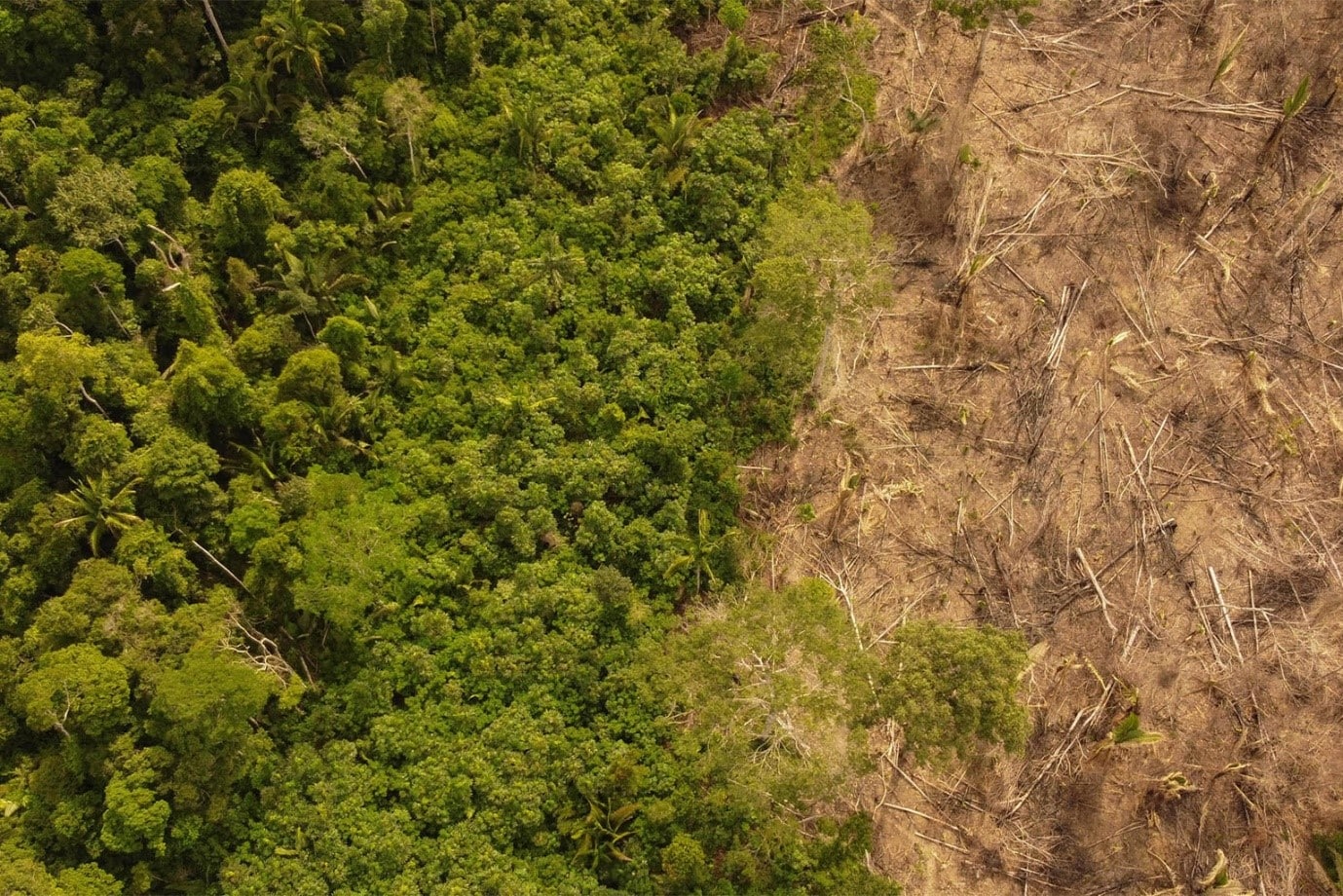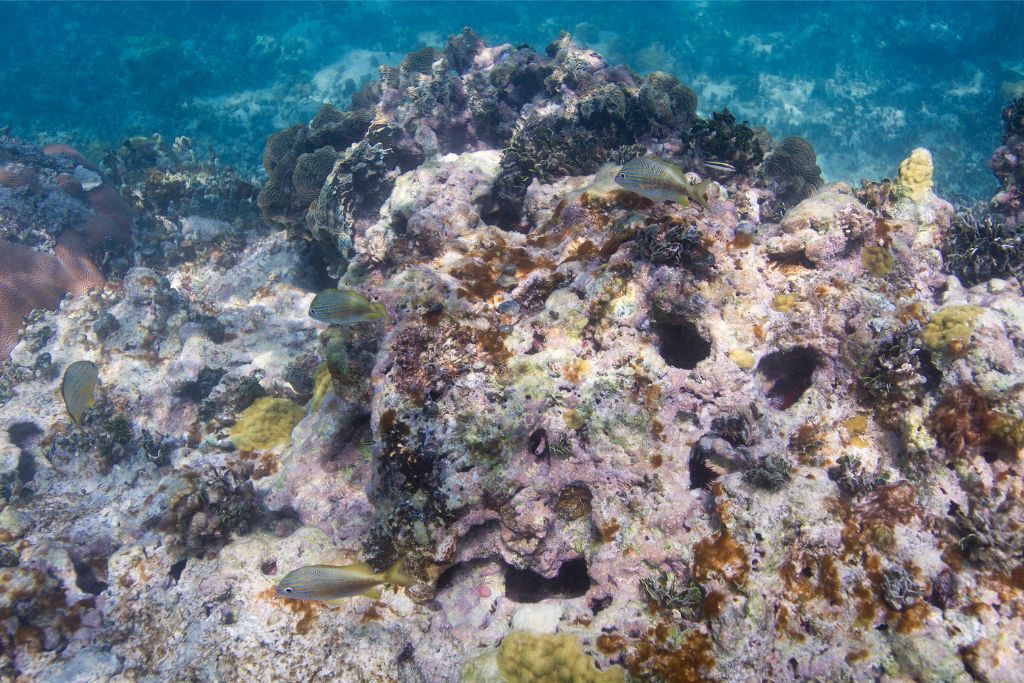Prior to the Industrial Revolution and all the subsequent detrimental human activities, the global average amount of carbon dioxide was about 280 parts per million (ppm). Today, that level is close to 420 ppm; and every tonne of CO2 emissions adds to global warming. The IPCC has identified several so-called ‘tipping points of climate change’, critical thresholds in a system that, if exceeded, can lead to irreversible consequences. But when exactly will we reach them, who will bear the brunt, and, most importantly, is there a way to avoid it?
—
What Are the Tipping Points of Climate Change?
The Intergovernmental Panel on Climate Change (IPCC) defines tipping points as “critical thresholds in a system that, when exceeded, can lead to a significant change in the state of the system, often with an understanding that the change is irreversible.”

The Tipping Points of Climate Change.Image: Vote Earth Now/Nature.
The last time carbon dioxide levels on our planet were as high as today was more than 4 million years ago. And it did not take us long to get to where we are now. Within just 60 years or so, the annual rate of increase in atmospheric CO2 was about 100 times faster than previous natural increases. Prior to the Industrial Revolution and all the subsequent detrimental human activities, the global average amount of carbon dioxide was about 280 parts per million (ppm). Today, that level is close to 420 ppm.
Every tonne of CO2 emissions adds to global warming. This tight correlation is highly suggestive of the fact that increasing anthropogenic greenhouse gas emissions is going to cause drastic changes in weather patterns, habitation, and biodiversity. The truth is that, in response to global warming, many of the world’s ecosystems are already getting closer and closer to catastrophic and potentially irreversible alterations.
Climate science is clear about one thing: the only way we can stop further warming is by achieving net zero greenhouse gas emissions. However, given the thermal inertia of the earth’s system, further warming over the next decade is still unavoidable, even if we were to reach net-zero emissions tomorrow. With this in mind, there is no sugar-coating of the fact that humanity is going to inevitably be confronted with increasingly frequent and severe hazards such as droughts and rising sea levels in the years to come.
The IPCC identifies several tipping points of climate change. Here are the 7 most likely to be crossed this century due to human activity:
- Greenland ice sheet
- Permafrost
- Ocean circulation and temperature (AMOC)
- Monsoons
- Amazon Rainforests
- Antarctic ice sheets
- Coral reef die-offs
When Will We Reach The Tipping Points of Climate Change?
In the early 2000s, there was a general consensus among scientists that most tipping points could be reached in the event of a 4C-increase in global temperatures. However, more recent assessments found that exceeding 1.5C of global warming risks crossing several of these thresholds. That is why climate scientists across the globe have long called governments for more serious commitments to keep the global temperature rise below 1.5C. The IPCC describes this as a “vital” necessity if we want to avoid the devastating impact of extreme weather events in the coming decades and, even worse, pass the burden on to future generations.
The Earth’s surface temperature has already increased by nearly 1.2C compared with the average in 1850–1900 and we are perfectly on track to reach the much feared 1.5C threshold between 2026 and 2042 in a scenario where emissions are not rapidly reduced.
What Happens If We Reach the Most Pressing Tipping Points?
1. Greenland Ice Sheet
The Arctic ice sheet is warming 3 to 4 times faster than the rest of the world, adding almost 1mm to global sea levels every year. This can be explained by the fact that, as the sun-reflecting ice surface melts as a consequence of global warming, deeper layers of the ocean as well as land are exposes; and because both the blue ocean and land absorb the sun’s energy better and faster, this vicious cycle inevitably leads to an increase in temperatures across the region and thus further melting.
As the world’s second-largest ice sheet, the Arctic holds enough water that, if melted completely, could raise sea levels by 7.2 metres (22 feet). A 1.5C increase in average temperatures could be the threshold at which the region’s ice sheet melting would become irreversible.
The melting of Greenland’s massive ice sheet is already occurring so rapidly that it is now the main factor in global sea level rise, according to satellite data from 2022. In the past two decades, Greenland lost more than 5,100 billion tons (4,700 billion metric tons) of ice, an amount that is enough to flood the entire United States in half a metre (1.5 feet) of water.

Greenland lost more than 5,100 billion tons (4,700 billion metric tons) of ice in the past two decades.
2. Permafrost
Permafrost refers to a ground that remains frozen for at least two consecutive years and is essentially a mixture of rock, soil, sediment, ice, and organic material. Permafrost is isolated from the atmosphere by a boundary called an “active layer”, consisting of live plants in summer, with added snow in winter. The active layer transfers heat from or to the permafrost.
This permanently frozen layer below the Earth’s surface – which covers parts of Siberia, Alaska northern Canada, and the Tibetan plateau – also holds the largest global carbon reserve from plants and animals that died and decomposed over thousands of years. Scientists estimate that it contains about 1,400 billion tons of carbon, nearly double the amount present in the atmosphere.
As the climate warms and permafrost begins to thaw, carbon dioxide and methane are released into the atmosphere. The spread of these highly toxic gases, scientists warn, would add up to 0.3C to global warming and could lead to humanity reaching other tipping points of climate change much faster.
3. Atlantic Meridional Overturning Circulation (AMOC)
AMOC – or Atlantic Meridional Overturning Circulation – is a large system of ocean currents driven by differences in the density of water, which determines their temperature. The AMOC acts as a conveyor belt, redistributing heat throughout the Earth’s climate system by bringing it from the tropics in the Southern Hemisphere all the way to Greenland and carrying cold water back south.
The freshwater input from glaciers’ melting, however, significantly weakens these currents. While the flow has already been reduced by about 15% in the last five decades, a weakening of 24% to 39% is expected even before the tipping point is reached, something that could happen as early as in 2100. A study published in 2021 found that AMOC is already at its weakest in over 1,600 years.
“A slowdown of the AMOC”, the IPCC explains, “could have consequences around the world: rainfall in the Sahel region could reduce, hampering crop production; the summer monsoon in Asia could weaken; regional SLR [sea level rise] could increase around the Atlantic, and there might be more winter storms in Europe.”
Indeed, scientists suggest that a partial collapse of this system could plunge Europe into the Ice Age. This happened once before, around 12,000 years ago. As Greenland melted waters flew into the North Atlantic Ocean, AMOC was brought to a virtual halt. This caused Europe and North America to become much colder and resulted in a global cooling of more than 10°C (18°F) that lasted for 1,200 years.
Now, a new analysis suggests that the AMOC could collapse around mid-century under the current emissions scenario, challenging previous findings of the IPCC, which in the recently published Sixth Assessment Report (AR6) suggested a collapse of AMOC in the 21st century to be very unlikely.
You might also like: What the Slowdown of Atlantic Ocean Circulation Means for the Future of the Climate
4. Monsoons
Farmers across the tropics, from the Amazon region in South America to West Africa and even India, count on seasonal monsoon cycles to grow their crops.
As global warming affects their strength, timing, and duration, farmers are forced to relocate their agricultural practices elsewhere. This mass climate change-induced migration would inevitably decrease productivity and threaten food security not only in these regions but pretty much across the whole world, disrupting the livelihoods of over a billion people.
According to a new NASA study, maize (corn) crops are among the most threatened under a high greenhouse gas emissions scenario. If countries do not manage to drastically reduce their carbon footprint, maize crop yields are projected to decline by about 24% by 2030, with severe implications worldwide. The production of some other staple crops like rice and wheat is also projected to decline drastically as a consequence of climate change, with supplies of these resources shrinking substantially, particularly in food-insecure developing countries.
You might also like: Why We Should Care About Global Food Security
5. Amazon Rainforest
Disrupting monsoons and rain patterns across South America would add to the burden already experienced by the Amazon Rainforest, also referred to as “the world’s lungs”, due to deforestation.

Despite deforestation rates improving in 2023, the Amazon Rainforest and the three mission species living in it are still under immense threat.
As the largest tropical rainforest on the planet and home to about three million species of plants and animals, the Amazon produces about half of its own rainfall by recycling moisture through evaporation and transpiration as air moves around. However, as the effects of climate change intensify, drought events are limiting the forest’s ability to influence rain patterns. Over the last 10 years, the Amazon rainforest experienced three “once-in-a-hundred-year” droughts.
This, coupled with extremely high (and constantly rising) rate of deforestation, has led not only to massive dieback but also to the rainforest shifting from a carbon sink to a net source of greenhouse gases, as it currently emits a greater amount of carbon dioxide than it can absorb.
A study published earlier this year suggested that the Amazon is rapidly losing its ability to bounce back from damage caused by droughts, fires and deforestation, suggesting that it is very close to reaching its tipping point.
You might also like: 10 Stunning Amazon Rainforest Deforestation Facts to Know About
6. Antarctic Ice Sheets
The Antarctic ice sheet, scientists argue, is already destabilising and it is very close to its tipping point even without added warming. The UN’s World Meteorological Organisation (WMO) reported that temperatures on Antarctica have increased by almost 3C over the past 50 years, with glaciers experiencing an accelerated retreat. Because the Antarctic ice sheet contains 58 metres of sea level rise equivalent over several centuries, scientists are growing worried about its recent behaviour.
Its mass losses of ice between 1992 and 2011 accounted for 4mm of sea level rise and almost 18% of the total global sea level rise in the period 2012-2017, a study found. By the end of the current century, the melting of the Antarctic ice sheets could contribute up to one metre to sea level rise.
Besides sea levels, melting glaciers in the Antarctic region could result in significant biodiversity loss, as thousands of animal species are dependent of the ice pack.
7. Bonus Tipping Point: Coral Reefs Die-Off
Coral reefs are one of the oldest ecosystems in the ocean and it can take thousands of years for the full development of a coral reef from the first formation of a polyp from colonising larvae. These complex ecosystems are among the most valuable ecosystems on the planet. Besides containing one of the most biodiverse ecosystems on earth, coral reefs protect coastlines from the damaging effects of wave action and tropical storms, are a source of nitrogen and other nutrients for marine food chains, assist in nitrogen and carbon fixing and are a source of income for millions of people around the world. They also play an important role in generating the sand and rubble that maintain islands and cays.
Unfortunately, these extremely important ecosystems are facing unprecedented events of severe bleaching and physical destruction due to human coastal development, as well as the effects of unmanaged tourism, including anchoring, fish feeding, marine litter and diver contact; and many scientists even argue that reefs have already reached their tipping point and are at risk of being completely wiped out by 2050.

Without immediate and bold action, coral reefs risk being completely wiped out by 2050.
You might also like: 5 Coral Reefs That Are Currently Under Threat and Dying
Can We Avoid This?
While we have no chance but to accept that we have – to some extent irreversibly – already changed our world, we cannot afford to let this trend continue, not just for ourselves but for the generations to come. Not stopping emissions and allowing global temperatures to rise means that our children and grandchildren will have to bear the brunt of our inaction and deal with unimaginably devastating events.
“Our suicidal way of life is accelerating civilisational collapse” – writes Sir Jonathon Porrit, one of Britain’s most respected environmentalists; and the only way we will avoid this is by drastically transforming our institutions and lifestyle. As the latest report of the UN’s Intergovernmental Panel on Climate Change (IPCC) warned, it is “now or never” to limit global warming to 1.5C.
You might also like: 13 Biggest Environmental Problems Of 2022














